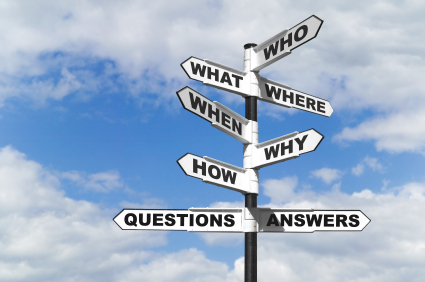
While you or your student is frantically trying to work on an experiment, you can help by guiding them on how to create a hypothesis.
Create a Hypothesis
A hypothesis is not just a random question floating around in the area that anyone can create. In fact, a hypothesis is an important part of the scientific method. Therefore, we will look at it in that context. Reviewing the steps that come before hypothesis creation in the scientific method will allow you to see how a proper hypothesis should be formed.
The steps to create a hypothesis are:
- Ask a question
- Gather background information
- Form the hypothesis
Ask a Question
In the scientific method, the first step is to ask a question. For the most basic learners and even some intermediate learners, try focusing around the concepts of who, what, where, when, why, and how. These suggestions should help you to get started with the development of your question.
We are not saying that you should necessarily use the following suggestions, as many of them may already have been answered. However, they are just examples of the format that you want to follow for the “ask a question” phase.
- How long does it take carrots to grow?
- Why does the sky get darker earlier?
- What happened to the dinosaurs?
- How did we evolve from monkeys?
See how these are all simple questions with rather complex answers? Even if you are well advanced in the scientific field, you can still use this model. The difference here though is that you might not need to sit down a formulate a question. You might just have questions posed to you, or you might wind up coming up with questions very quickly. In general, you just might not need to brainstorm as much.
Gather Background Information
Before you really begin to form your hypothesis, you need to do some research on your topic. You will start with your question as a basis. You might think that you should immediately go into your hypothesis, and that you should not bother to gather information before that. However, you are incorrect.
Say that the question that you want to answer has no answer, or perhaps you are not correct in your assumptions about the topic. Doing some basic and often simple research will prevent you from finding out this information when you are knee deep in your experiment.
For example, let’s say that question that you posed was, “How did we evolve from monkeys?” If you do some basic research, you will find that Charles Darwin did not say that we evolved from monkeys, as many people seem to think that he said. In fact, Darwin said that human beings and apes shared a common ancestor. This statement is radically different than “humans evolved from monkeys.” Finding this fact out now is important to later success in your experiment.
Form the Hypothesis
Now that you have gathered sufficient information about your general topic, it is time to narrow it down into a more specific unit that you can actually conduct an experiment on.
Let us return to the questions we posed above, and put them into a hypothesis format. They are usually formed as a statement but can be made in question form.
- If we plant carrots in deeper soil it will take them longer to grow than in shallow soil.
- How does the Earth’s rotation affect the number of daylight hours?
- If we study marine fossils found in the arctic, we will see that dinosaurs disappeared when a comet hit the Earth.
- Human beings are not descended from apes but share a common ancestor.
Test the Hypothesis
A hypothesis involves a statement about what you will do, but also what you expect to happen or speculation about what could occur. Once you have created your hypothesis you will then need to test it, analyze the data and form your conclusion. To read more about hypothesis testing go to Examples of Hypothesis Testing.

 How Do I Inhow To Create A Hypothesishow Do You Write A Research Proposal For Academic Writingclude Transition Words In My Essay
How Do I Inhow To Create A Hypothesishow Do You Write A Research Proposal For Academic Writingclude Transition Words In My Essay